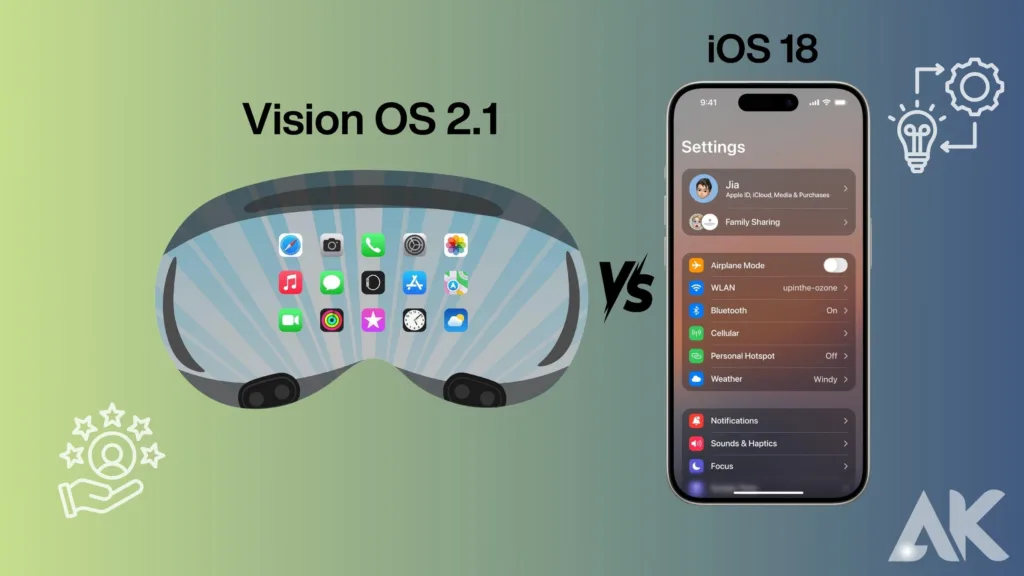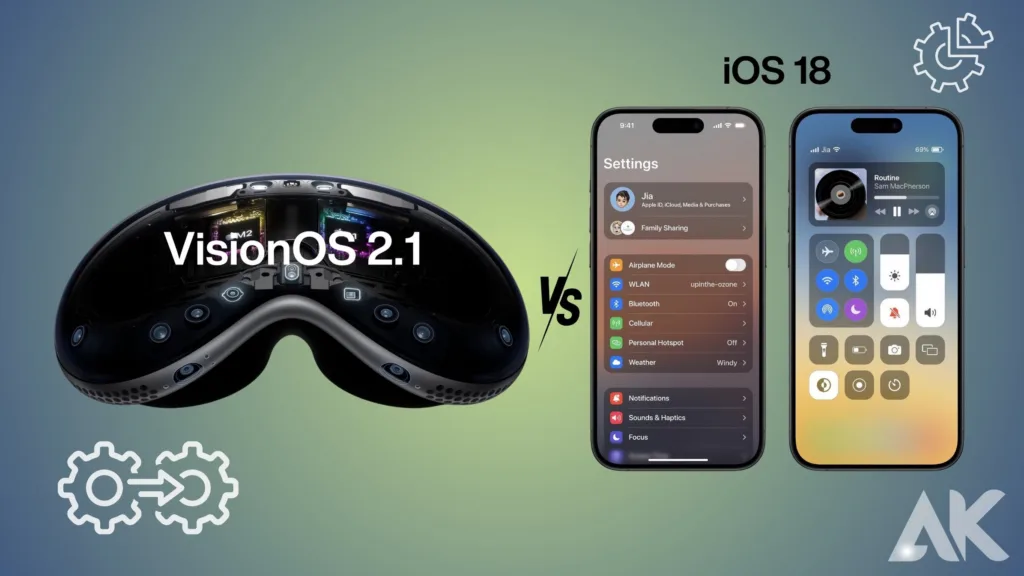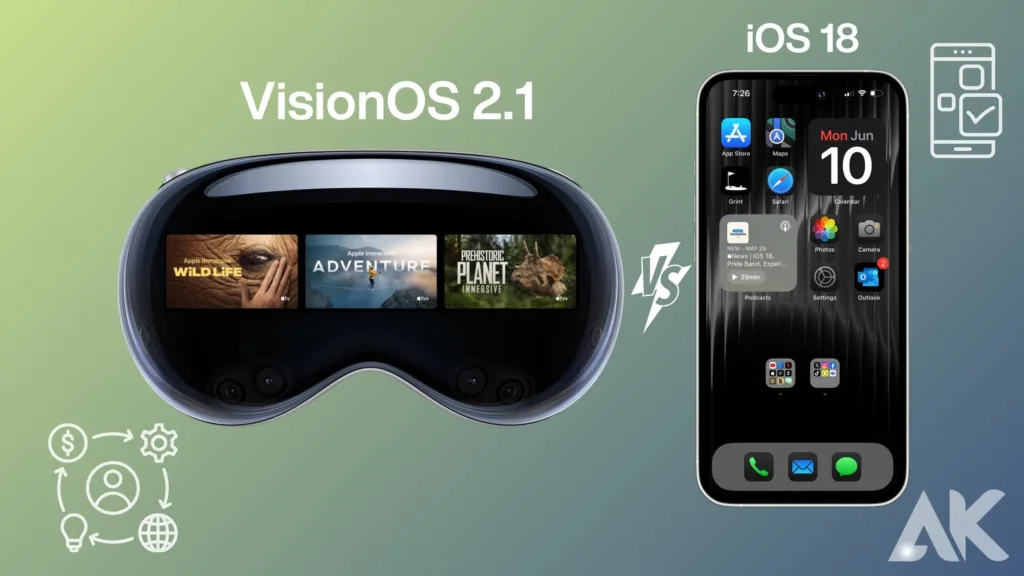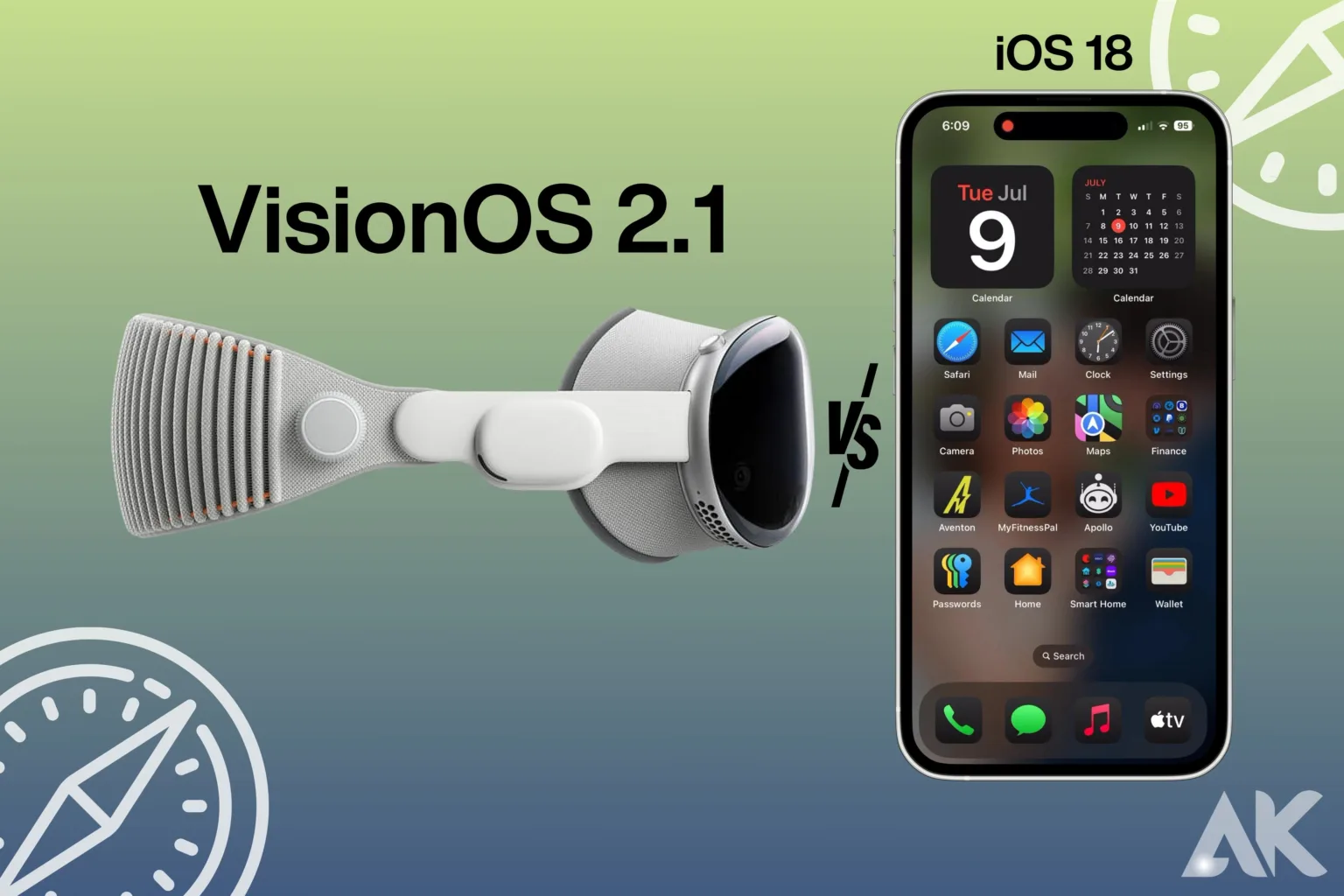VisionOS 2.1 vs iOS 18 As Apple continues to develop and enhance its operating systems, the release of visionOS 2.1 and iOS 18 provides users with exciting new features and developments that cater to varied requirements and experiences. visionOS 2.1 was developed specifically for the Apple Vision Pro, with a focus on offering immersive augmented and virtual reality experiences that seamlessly merge digital information with the physical environment. This operating system is intended for users who wish to push the boundaries of productivity, social interaction, and fun by utilizing a spatial computing environment.
On the other hand, iOS 18 improves daily functionality by leveraging advances in customization, security, and connectivity, thereby accommodating a diverse range of iPhone users. With improvements like improved privacy controls, revamped widgets, and smarter notifications, iOS 18 aims to improve the smartphone experience for users who rely on their devices for a range of tasks, from productivity and entertainment to communication and navigation.
User Experience: vision OS 2.1 vs iOS 18

| Feature | visionOS 2.1 | iOS 18 |
|---|---|---|
| Target Device | Apple Vision Pro | iPhone |
| User Interface | Immersive 3D environment with spatial computing | Traditional 2D interface with widgets |
| Primary Focus | Augmented and virtual reality applications | Everyday smartphone functionalities |
| User Interaction | Gesture, eye tracking, and voice commands | Touch, voice commands, and physical buttons |
| Customization | Customizable virtual environments and apps | Enhanced widget customization and app layouts |
| App Ecosystem | Specialized apps for AR/VR experiences | Extensive range of apps across all categories |
| Productivity Features | Collaboration tools for virtual meetings | Productivity apps like Notes, Calendar, and Mail |
| Entertainment Options | Immersive gaming and interactive experiences | Media consumption via streaming and gaming apps |
| Privacy and Security | Privacy features tailored for AR interactions | Robust security features and privacy controls |
| Accessibility Features | Unique accessibility settings for AR/VR users | Comprehensive accessibility options for various needs |
Hardware Compatibility: VisionOS 2.1 vs iOS 18

| Feature | visionOS 2.1 | iOS 18 |
|---|---|---|
| Compatible Devices | Apple Vision Pro | iPhone models (varies by version) |
| Minimum Requirements | Dedicated AR/VR hardware | iPhone 8 and newer |
| Performance Optimization | Designed for high-performance AR/VR experiences | Optimized for various iPhone hardware configurations |
App Ecosystem: visionOS 2.1 vs iOS 18

| Feature | visionOS 2.1 | iOS 18 |
|---|---|---|
| App Availability | Limited to AR/VR-specific applications | Extensive range of apps across all categories |
| App Store | Specialized app store for visionOS | Established App Store with millions of apps |
| Development Tools | ARKit and RealityKit for immersive apps | Swift and UIKit for traditional apps |
| User Experience | Focus on immersive and interactive experiences | Focus on usability and multitasking |
Performance Enhancements: visionOS 2.1 vs iOS 18
| Feature | visionOS 2.1 | iOS 18 |
|---|---|---|
| Optimization Focus | AR/VR rendering and spatial computing | Faster app launching, smoother multitasking |
| Graphics Performance | High-performance GPU for immersive environments | Enhanced GPU for gaming and media consumption |
| Battery Efficiency | Optimized for sustained AR/VR use | Improved battery life for daily smartphone tasks |
| Processing Power | Advanced processing for real-time AR/VR tasks | Efficient CPU usage for everyday apps and games |
Privacy and Security: visionOS 2.1 vs iOS 18
| Feature | visionOS 2.1 | iOS 18 |
|---|---|---|
| User Data Protection | Data anonymization for AR interactions | Enhanced app privacy reports |
| Biometric Security | Eye tracking and gesture controls for access | Face ID and Touch ID |
| Privacy Settings | Specific privacy controls for AR applications | Comprehensive privacy settings for all apps |
| Data Encryption | End-to-end encryption for sensitive data | Strong encryption across all user data |
Interface Design: VisionOS 2.1 vs iOS 18
| Feature | visionOS 2.1 | iOS 18 |
|---|---|---|
| Design Philosophy | Immersive 3D spatial interface | Intuitive 2D interface with flat design |
| Navigation Style | Gesture-based and eye-tracking navigation | Touch-based navigation with icons and menus |
| Customization Options | Limited customization for virtual spaces | Extensive widget and home screen customization |
| User Experience | Focused on interaction with virtual objects | Streamlined experience for app accessibility |
Accessibility Features: VisionOS 2.1 vs iOS 18
| Feature | visionOS 2.1 | iOS 18 |
|---|---|---|
| Accessibility Options | Customized settings for AR/VR experiences | Wide range of accessibility settings for various needs |
| Gesture Controls | Supports alternative gestures for navigation | VoiceOver, Switch Control, and AssistiveTouch |
| Visual Assistance | Enhanced contrast and virtual sign language support | Magnifier and high-contrast settings |
| Audio Accessibility | Spatial audio cues for immersive experiences | Sound recognition and hearing aid compatibility |
Conclusion
The decision between visionOS 2.1 and iOS 18 ultimately boils down to your use of technology, personal preferences, and way of living. visionOS 2.1 offers an unparalleled experience for those who are prepared to fully immerse themselves in augmented and virtual realities, making it an ideal option for those who enjoy state-of-the-art applications in gaming, education, and collaborative environments. This operating system enables users to interact with digital material in ways that promote creativity and discovery and are truly innovative.
However, iOS 18 offers a strong foundation for frequent smartphone use, enhancing the well-known functions that iPhone users rely on every day. With enhancements meant to optimize user efficiency, usability, and safety, iOS 18 ensures a seamless experience for a range of activities, from communication management to app and service access. So, whether you’re ready to embrace the future with visionOS 2.1 or would rather stick with iOS 18, Apple provides solutions that meet a range of user preferences, paving the road for personalized technology experiences.
FAQ
Q1: What is visionOS 2.1?
visionOS 2.1 is Apple’s operating system designed for the Apple Vision Pro, focusing on immersive augmented and virtual reality experiences. It allows users to interact with digital content in a spatial environment using eye tracking, gestures, and voice commands.
Q2: What is the iOS 18 version?
Apple’s most recent operating system for iPhones, iOS 18, offers enhancements in productivity, security, customization, and performance. With improved privacy controls, new widgets, and smarter notifications, it improves the smartphone experience.
Q3: Which gadgets are ready for visionOS 2.1?
Only the Apple Vision Pro, which is intended for AR/VR experiences, is compatible with VisionOS 2.1.
Q4: Which gadgets are iOS 18 compatible?
With support for iPhone devices dating back to iPhone 8, iOS 18 ensures that a wide variety of consumers may take advantage of its features.
Q5: How is the user experience different between iOS 18 and visionOS 2.1?
While iOS 18 offers a conventional 2D interface optimized for daily smartphone usage, visionOS 2.1 offers an immersive 3D environment created for AR/VR. Although iOS 18 is concentrated on improving smartphone functionality, visionOS is perfect for consumers who wish to discover interactive digital material.

